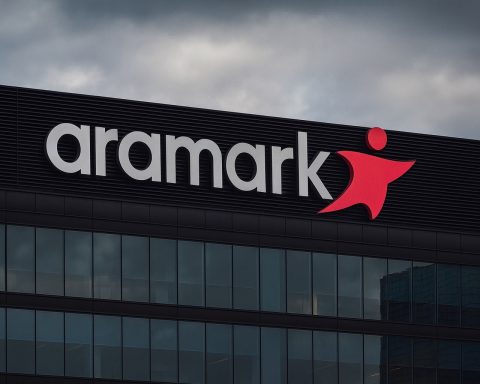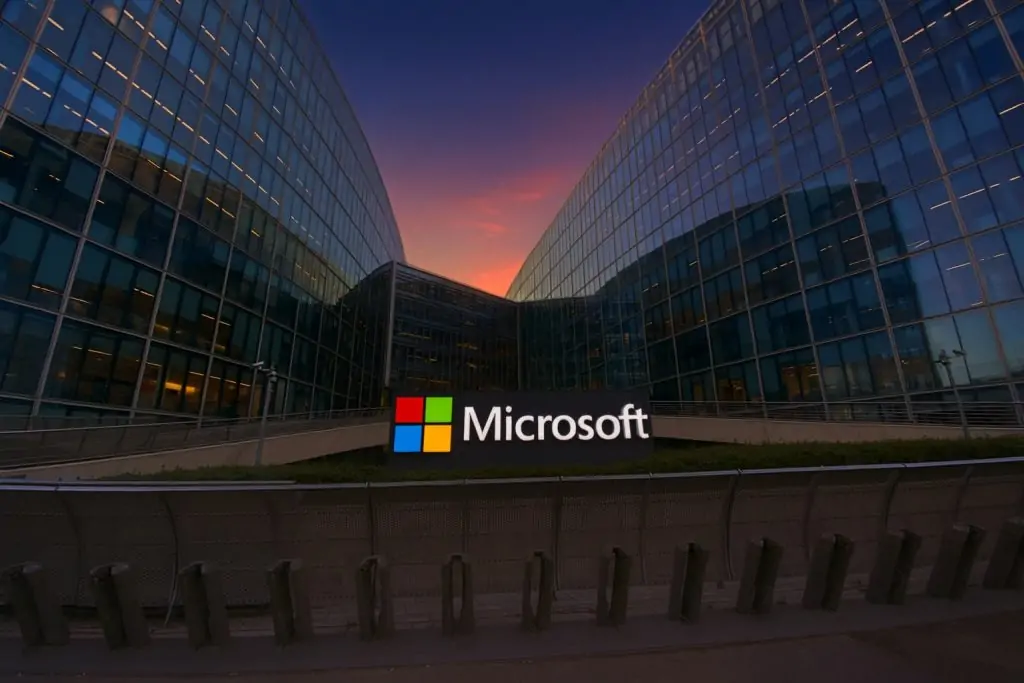On November 17, 2025, fresh regulatory filings confirmed that billionaire investor Peter Thiel has completely exited Nvidia — the flagship stock of the artificial intelligence (AI) boom — just days after SoftBank Group revealed it had sold its entire $5.8 billion Nvidia stake. Together, the back‑to‑back moves by two of the tech world’s most influential risk‑takers have intensified fears that the AI trade may be entering bubble territory. [1]
Below is a deep dive into what happened, why it matters, and what’s at stake for Nvidia, AI investors, and the broader market as Wall Street waits for Nvidia’s crucial earnings report on November 19.
Key Takeaways
- Peter Thiel’s hedge fund dumped its entire Nvidia stake of 537,742 shares in Q3 2025 — a position that once made up around 40% of the portfolio. [2]
- SoftBank sold all 32.1 million Nvidia shares in October, raising about $5.8 billion to fund massive AI bets including OpenAI and the $500 billion “Stargate” data‑center project. [3]
- These exits come after Nvidia reached a $5 trillion valuation and then suffered its sharpest pullback of 2025, wiping out hundreds of billions in market value in days. [4]
- Despite the volatility, Nvidia still commands a market cap of roughly $4.5–$4.6 trillion and remains at the center of a historic AI infrastructure build‑out. [5]
- Nvidia’s Q3 FY2026 earnings on November 19 are widely seen as a make‑or‑break moment for the AI trade and could validate — or puncture — lofty expectations. [6]
Inside Peter Thiel’s Nvidia Exit
A quiet 13F filing with loud implications
According to newly filed 13F disclosures, Thiel Macro LLC — Peter Thiel’s hedge fund — sold all 537,742 Nvidia shares it held during the July–September quarter of 2025. At Nvidia’s September 30 closing price, that position was worth roughly $100 million. [7]
For Thiel Macro, this wasn’t a minor trim:
- The Nvidia stake previously accounted for about 40% of the fund’s equity portfolio. [8]
- After the sale and other moves, the fund’s reported equity book shrunk from about $212 million to $74.4 million between Q2 and Q3. [9]
The filings also show that Thiel:
- Dumped his entire position in Vistra Corp. (VST) — roughly 208,747 shares, previously about 19% of the portfolio. [10]
- Slashed his Tesla stake by around 76%, leaving 65,000 Tesla shares as of September 30, worth about $28.9 million and representing nearly 39% of the portfolio. [11]
- Boosted positions in Microsoft and Apple, buying tens of thousands of additional shares in each. Together with Tesla, those three now dominate Thiel Macro’s holdings. [12]
In other words, the Nvidia exit is part of a broader concentration into “platform” megacaps — Microsoft, Apple, and Tesla — and away from what Thiel evidently sees as the most crowded AI pureplay.
Thiel’s AI bubble warning
Thiel has been increasingly vocal about the risk that AI valuations are running ahead of economic reality. In recent commentary and coverage of his portfolio moves, he has:
- Compared the current AI enthusiasm to the 1999 dot‑com bubble, arguing that investors may be pricing in decades of future profits today. [13]
- Suggested that while AI’s long‑term impact could be massive, the payoff timeline could be much slower than markets currently imply. [14]
TheStreet’s widely shared article “Peter Thiel dumps top AI stock, stirring bubble fears” framed his Nvidia sale as a “full‑blown exit” rather than a tweak — and as an emphatic statement about AI hype. [15]
For an investor known for backing transformational tech (PayPal, Facebook, Palantir, SpaceX) early, walking away from the ultimate AI hardware winner at its peak valuation sends a powerful signal — even if it proves early.
SoftBank’s $5.8 Billion Nvidia Sale Set the Stage
Thiel’s move comes right on the heels of SoftBank Group’s own Nvidia exit, which jolted the market on November 11. [16]
Masayoshi Son cashes in — to double down on AI
In its latest results, SoftBank disclosed that it had:
- Sold all 32.1 million Nvidia shares it held in October, raising approximately $5.83 billion. [17]
- Reallocated that capital to fund Masayoshi Son’s massive AI push — including up to $40 billion pledged to OpenAI and participation in the proposed $500 billion “Stargate” data‑center project. [18]
- Simultaneously sold around $9.2 billion of T‑Mobile shares, further enlarging its AI war chest. [19]
Reuters reported that Nvidia shares fell more than 2% on the SoftBank news, with analysts reading the sale as a sign that one of tech’s boldest risk‑takers believes the AI chip rally may be due for consolidation — or at least a pause. [20]
“Circular” AI deals fuel bubble talk
Coverage of SoftBank’s and OpenAI’s plans has also resurfaced concerns about “circular” AI deals:
- Economic Times highlighted a $10 billion transaction between Nvidia and OpenAI, where funding reportedly cycles from Nvidia into OpenAI and then back into Nvidia as GPU purchases — a structure some critics say inflates valuations on both sides. [21]
- Analysts point out that similar loops exist across the AI ecosystem: cloud giants finance AI startups, which in turn spend heavily on Nvidia hardware, helping justify those same giants’ AI valuations. [22]
When two high‑profile investors — Son and Thiel — choose this moment to step away from Nvidia stock, it’s hardly surprising that “AI bubble” has become the market’s phrase of the week.
How Overstretched Is Nvidia?
From first $5 trillion company… to violent pullbacks
Nvidia’s fundamentals have been eye‑popping:
- In late October, Nvidia briefly became the first company ever to exceed a $5 trillion market valuation, cementing its status as the king of the AI chip boom. [23]
- Reuters estimates that Nvidia’s shares have soared about 1,000% since the launch of ChatGPT in late 2022, including more than 40% gains year‑to‑date in 2025. [24]
- As of November 17, multiple data providers peg Nvidia’s market cap around $4.5–$4.6 trillion, even after recent volatility. [25]
But the higher the climb, the harsher the corrections:
- Earlier this month, Economic Times reported that Nvidia had lost roughly $450 billion in market value in just three days, in what it called the biggest wipeout of 2025. [26]
- A follow‑up piece described a broader episode where about $800 billion in value vanished during Nvidia’s sharpest crash of the year, as AI stocks sold off globally. [27]
These swings underscore how fragile sentiment is when expectations are sky‑high. A single earnings miss, regulatory shock, or pause in AI capital spending could move hundreds of billions of dollars in days.
Yet demand for Nvidia chips hasn’t gone away
Despite the headline‑grabbing exits and drawdowns, real‑world AI infrastructure spending still looks robust:
- On November 17, Taiwan‑based GMI Cloud announced plans to build a $500 million AI data center using Nvidia chips, underscoring ongoing demand for the company’s GPUs in cloud and enterprise workloads. [28]
- A new 13F analysis from MarketBeat shows Pacific Heights Asset Management increased its Nvidia holdings by 13.2%, holding 860,000 shares valued at about $136 million — making Nvidia its third‑largest position. [29]
- Wall Street coverage remains overwhelmingly bullish: many analysts still rate Nvidia a “Buy” or “Strong Buy” with average price targets well above the current ~$190 level. [30]
So while some “smart money” is clearly de‑risking, other institutions are still adding to Nvidia — a sign that the AI trade is evolving, not evaporating.
Why Thiel and SoftBank Worry About an AI Bubble
Michael Burry, Wall Street banks, and accounting red flags
The sense that AI valuations may have overshot reality isn’t limited to Thiel and Son. Several high‑profile skeptics have flagged similar risks:
- Hedge fund manager Michael Burry, famous for betting against the U.S. housing market in 2008, has taken large put positions linked to roughly 1 million Nvidia shares, effectively wagering on downside. [31]
- Reuters has reported that bank CEOs at Morgan Stanley and Goldman Sachs have warned of a potential equity drawdown, citing stretched valuations — especially in AI‑linked tech stocks. [32]
- Critics argue that some big tech firms are using aggressive depreciation schedules for AI hardware, effectively smoothing earnings while under‑recognizing the true cost of massive GPU purchases. [33]
If those accounting practices are revised, reported profits could look less spectacular, forcing investors to recalibrate what they’re willing to pay for AI‑driven growth.
“Circular deals” and reflexive hype
Economic Times and Reuters both highlight a key structural risk: AI investment loops that feed on themselves. [34]
A simplified version looks like this:
- Nvidia’s soaring profits lift its stock, enabling it (directly or indirectly) to invest in AI startups.
- Those startups — such as OpenAI and various AI cloud providers — plow that capital into Nvidia GPUs and related infrastructure.
- The resulting revenue growth further justifies high valuations and more fundraising, drawing in additional speculative capital.
Thiel and Son appear to be asking a blunt question: How much of Nvidia’s current demand is sustainable, and how much is the product of an investment feedback loop that could slow sharply?
What Thiel’s New Portfolio Says About His AI View
Thiel’s Nvidia exit doesn’t mean he’s bearish on technology or AI overall — far from it. His revamped portfolio suggests a shift from “pure AI hardware exposure” to “diversified AI platforms”:
- Tesla (still his single largest position) gives exposure to AI‑driven autonomous driving, robotics, and energy systems. [35]
- Microsoft and Apple provide AI upside through cloud computing, productivity tools, devices, and app ecosystems, while also generating massive cash flows from more mature businesses. [36]
In other words, Thiel seems to be de‑risking the “picks and shovels” trade — Nvidia’s GPUs — while still betting that AI will be a long‑term growth driver for diversified Big Tech.
That mirrors a broader institutional trend: shifting from narrow AI bets into companies that can absorb AI volatility across multiple revenue streams.
Markets on Edge Ahead of Nvidia’s November 19 Earnings
A key test for the AI narrative
Nvidia will report its Q3 FY2026 results after the market close on Wednesday, November 19, 2025, with a conference call scheduled for 2 p.m. PT (5 p.m. ET). [37]
The company has guided for:
- Around $54 billion in revenue, plus or minus 2%, driven primarily by data‑center demand for its latest AI chips. [38]
In the prior quarter, Nvidia reported:
- 56% year‑on‑year revenue growth to about $46.7 billion, with data‑center sales growing at a similar pace to roughly $41.1 billion — numbers that few large companies in history have ever matched. [39]
Analysts, investors, and even central banks are watching this report because:
- Reuters notes that Nvidia’s earnings are one of the last major catalysts of 2025, with markets already nervous about an “AI bubble” after recent volatility. [40]
- Previews from outlets like Investors.com, Morningstar, IG, and others emphasize that any sign of cooling demand, pricing pressure, or delayed projects could trigger a broader tech sell‑off. [41]
What the market will be looking for
When Nvidia reports, expect investors to focus on five big questions:
- Is data‑center demand still accelerating?
Any slowdown in orders from cloud giants, governments, or hyperscale AI operators would be seized upon as evidence that the AI spending spree is peaking. [42] - How quickly is the new Blackwell architecture ramping?
Analyst previews suggest Nvidia’s next‑generation chips could drive another leg of growth — but production or deployment bottlenecks could temper enthusiasm. [43] - Are “circular” deals still propping up demand?
Investors will listen closely for commentary on long‑term purchase commitments tied to complex financing structures involving OpenAI and major cloud partners. [44] - How are margins and pricing holding up?
With new competition emerging from AMD and custom chips at Amazon, Google, and others, any hint of margin pressure could fuel the bubble narrative. [45] - Does guidance still support a multi‑trillion‑dollar valuation?
Guidance that merely “meets” lofty expectations could be punished if investors had priced in another major beat.
Is This the Beginning of the End for the AI Trade?
A bubble… or just a brutal shake‑out?
The combined message from Peter Thiel, SoftBank, Michael Burry, and cautious bank CEOs isn’t that AI is a fad — it’s that returns may no longer be linear or guaranteed from here. [46]
Several things can be true at once:
- AI will likely remain a transformative technology for years, with enormous spending on chips, data centers, and software. [47]
- Nvidia might continue to dominate AI hardware, thanks to its ecosystem, software stack, and ongoing innovation. [48]
- At the same time, current valuations could already discount a best‑case scenario, leaving little margin for error if growth merely normalizes.
That mix — strong fundamentals plus extreme expectations — is precisely how bubbles feel before they resolve.
What this means for investors (general, not personal advice)
For market participants watching from the sidelines (or holding Nvidia, AI ETFs, or Big Tech), today’s news flow suggests a few broad themes to keep in mind:
- Concentration risk is real. Nvidia and a handful of AI leaders make up an outsized share of major indices and thematic funds. When they move, the market moves. [49]
- Even “smart money” disagrees. Some hedge funds are exiting Nvidia entirely, others are doubling down. That’s a sign of a mature, highly uncertain trade — not a one‑way bet. [50]
- Earnings, cash flows, and pricing power matter more than ever. At multi‑trillion valuations, small changes to growth or margins can translate into enormous shifts in market value. [51]
Anyone considering investment decisions here should carefully assess their risk tolerance, time horizon, and diversification — and consult a qualified financial advisor for personalized guidance. Nothing in this article is individualized financial advice.
The Bottom Line
On November 17, 2025, Peter Thiel’s complete Nvidia exit added fresh fuel to a question that has been simmering for months: is the AI boom a durable structural shift or a bubble nearing its bursting point?
With SoftBank already offloading its entire Nvidia stake to fund giant AI bets elsewhere, Michael Burry shorting the stock, and Wall Street openly debating AI froth, sentiment has clearly shifted from euphoria to anxious scrutiny. [52]
Yet, Nvidia remains the central supplier to an AI arms race that’s still very much underway — from $500 million data centers in Taiwan to trillion‑dollar infrastructure plans in the U.S. and beyond. [53]
The next big verdict won’t come from Thiel, SoftBank, or Twitter feeds. It will come on November 19, when Nvidia opens its books and tells investors whether the AI story still justifies one of the largest market capitalizations in history.
Until then, the only certainty is volatility.
References
1. www.bloomberg.com, 2. www.bloomberg.com, 3. www.reuters.com, 4. www.reuters.com, 5. capital.com, 6. www.wallstreethorizon.com, 7. www.bloomberg.com, 8. m.economictimes.com, 9. m.economictimes.com, 10. www.tipranks.com, 11. www.tipranks.com, 12. www.tipranks.com, 13. www.tipranks.com, 14. www.tipranks.com, 15. www.thestreet.com, 16. www.reuters.com, 17. www.reuters.com, 18. www.reuters.com, 19. www.reuters.com, 20. www.reuters.com, 21. m.economictimes.com, 22. www.reuters.com, 23. www.reuters.com, 24. www.reuters.com, 25. capital.com, 26. m.economictimes.com, 27. m.economictimes.com, 28. finance.yahoo.com, 29. www.marketbeat.com, 30. www.marketbeat.com, 31. m.economictimes.com, 32. www.reuters.com, 33. m.economictimes.com, 34. m.economictimes.com, 35. www.tipranks.com, 36. www.tipranks.com, 37. www.wallstreethorizon.com, 38. m.economictimes.com, 39. m.economictimes.com, 40. www.reuters.com, 41. www.investors.com, 42. www.ig.com, 43. www.ig.com, 44. m.economictimes.com, 45. www.morningstar.com, 46. www.reuters.com, 47. www.investors.com, 48. www.marketbeat.com, 49. www.macrotrends.net, 50. www.bloomberg.com, 51. www.investors.com, 52. www.reuters.com, 53. finance.yahoo.com







